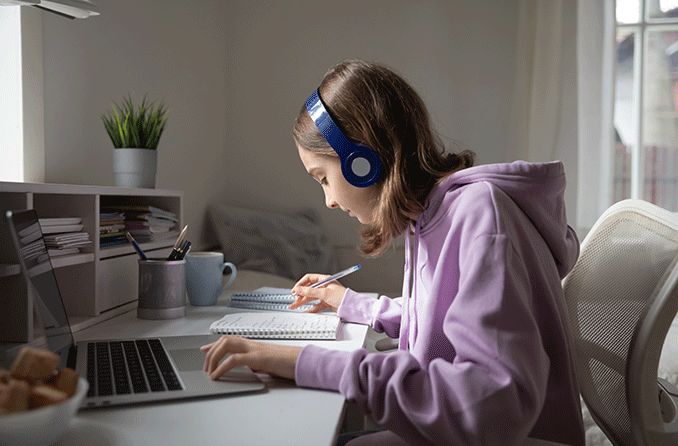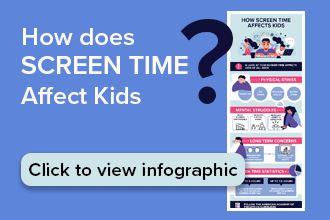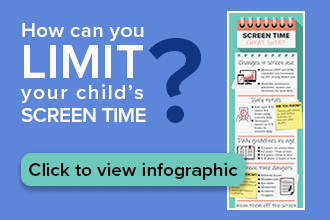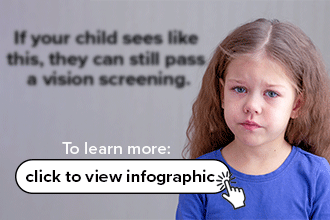5 ways COVID-19 and remote learning may add to kids’ myopia risk factors

COVID-19 and remote learning may affect children’s vision
For many children, education styles have transitioned from in-person classrooms to remote learning. Children are spending much more time indoors and in front of their digital screens. These changes may be increasing kids’ risk factors for myopia, but there are many ways to help keep it in check.
Childhood myopia, which was already very common, has increased significantly around the world.
According to a recent study in Feicheng, China, myopia in children between the ages of 6 and 13 began to increase during the coronavirus pandemic. And numbers have continued to grow globally.
Some have even referred to 2020 as “the year of quarantine myopia.”
How might COVID-19, and all the changes it has led to in education and daily habits, be affecting your child’s eyesight? The following factors may be contributing to the recent rise in childhood myopia.
SEE RELATED: COVID-19 Study Links Screen Time and Myopia in Children
Environmental factors
Environmental factors play an important role in the development of children’s eyesight. At school, children experience a lot of changing scenery. In class, during physical education and at recess, there is plenty to see. The more children have to look at, the more movement and proper development their eyes can achieve.
Less time spent outdoors may increase the risk of myopia
According to a Michigan State University study, daylight can promote the proper growth, development and focus of the eye.
Researchers found that bright outdoor light helps regulate axial length growth in a child’s developing eye. Axial length is the length of the eye from front to back. And too much growth in axial length is the most common cause of childhood myopia.
Spending too much time indoors can deprive the eyes of bright outdoor light. This may disrupt the regulation of axial growth.
Excessive dim lighting, especially contrasted with the bright light of digital screens, can also cause eye strain due to glare.
Focusing on short distances
Classroom environments encourage children to exercise their eyes. Blackboards, projectors and teachers at the front of the room mean that kids read and pay attention from a distance. At home, however, most learning is done up close. Kids use their near vision almost exclusively with computers, tablets and workbooks.
When children primarily focus at short distances, their eyes can become trained to constantly hone in on what is right up close. The risk of nearsightedness is higher when eyes are simply not trained to see far away. In some cases, this can result in children not being able to change their focus to distant objects easily.
Increased screen time
Remote learning has become the new normal for thousands of children. And while remote learning has been essential, excessive screen time can cause added stress and strain on the eyes.
Too much screen time can cause digital eye strain, dry eyes and blurry vision. Blue light emitted from screens can also cause glare.
Fortunately, many digital devices include settings that can tone down blue light exposure, such as “night mode.” Blue light glasses are also an option for children who use digital devices for school. Blue light glasses are available with both prescription and non-prescription lenses.
SEE RELATED: How to take care of your eyes while in self-quarantine
Absence of school vision screenings
Schools typically provide both hearing and vision screenings for children each school year. But for schools that have moved to online learning, these screenings have become unavailable.
Some eye charts can be downloaded for use, and a basic, unofficial vision test can be conducted at home. But contact an eye doctor if your child has trouble seeing any letters or symbols on the chart. This may be a sign that they are experiencing vision problems.
It's important to understand that these home tests cannot replace a real eye exam at a doctor's office. Only an eye doctor can make an official diagnosis of any refractive errors or other eye or vision issues. Plus, not all kids show clear signs of vision problems.
Vision problems may go unnoticed at home
Vision problems can be more difficult to detect when daily visual interactions and activities are limited.
And often, younger children may not mention any vision problems they are experiencing. They may not know how to express it, or they may not even realize their vision is different than anyone else’s.
If you notice your child squinting at their work or complaining of blurry vision or headaches, they may have a vision problem. Contact an eye doctor to schedule an eye exam if this is the case.
SEE RELATED: Vision problems of school-age children
What to do for your child’s vision at home
Remote learning can sometimes feel quite limiting for both parent and child. But when it comes to caring for your child’s vision, there are several ways to do so at home, including the following:
Increase your child’s outdoor playtime to at least 90 minutes per day in the day time. There is strong evidence that enough daylight can delay myopia development.
Reduce near work and blue light exposure by limiting their screen time outside of school work. Blue light glasses or light filtering apps may also help.
Encourage your child to participate in activities that don’t require a screen. Playing outdoors, arts and crafts, board games, reading books and helping around the house are better options.
Listen to your child’s vision concerns and watch out for any peculiar vision behaviors. Squinting or keeping one eye closed may be visual compensation habits.
Encourage children to follow the 20-20-20 rule during near work to avoid digital eye strain. The rule advises children to take a 20-second break every 20 minutes, looking at a distance of 20 feet away.
Even in the ongoing pandemic, routine eye exams are still important. If it’s been more than a year since your child’s last eye exam, contact your eye doctor to schedule an appointment. They will be happy to talk with you about their office’s COVID-19 safety measures.
READ NEXT: Children are missing eye exams due to COVID-19
Amber McManes also contributed to this article.
Progression of myopia in school-aged children after COVID-19 home confinement. JAMA Ophthalmology. January 2021.
Visual development in children aged 0 to 6 years. Arquivos Brasileiros de Oftalmologia. May 2019.
The benefit of daylight for our eyesight. Michigan State University Extension. October 2016.
Light exposure and eye growth in childhood. Investigative Ophthalmology & Visual Science. October 2015.
Computer vision syndrome. American Optometric Association. Accessed March 2022.
Effects of blue light on the circadian system and eye physiology. Molecular Vision. January 2016.
Myopia prevention and outdoor light intensity in a school-based cluster randomized trial. Ophthalmology. August 2018.
Computers, digital devices and eye strain. American Academy of Ophthalmology. March 2020.
Page published on Tuesday, February 9, 2021
Page updated on Tuesday, May 3, 2022
Medically reviewed on Thursday, April 14, 2022









